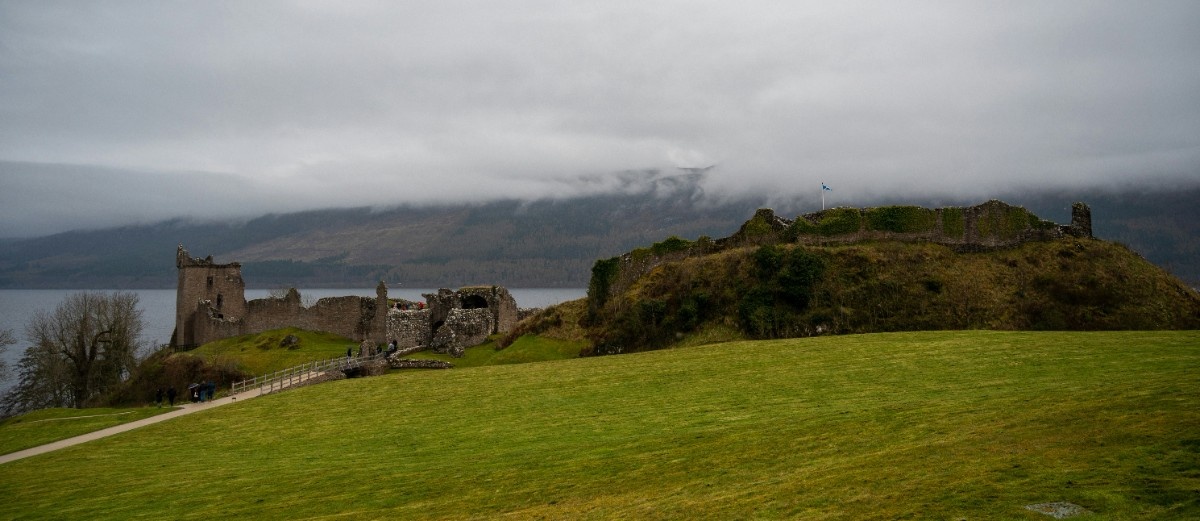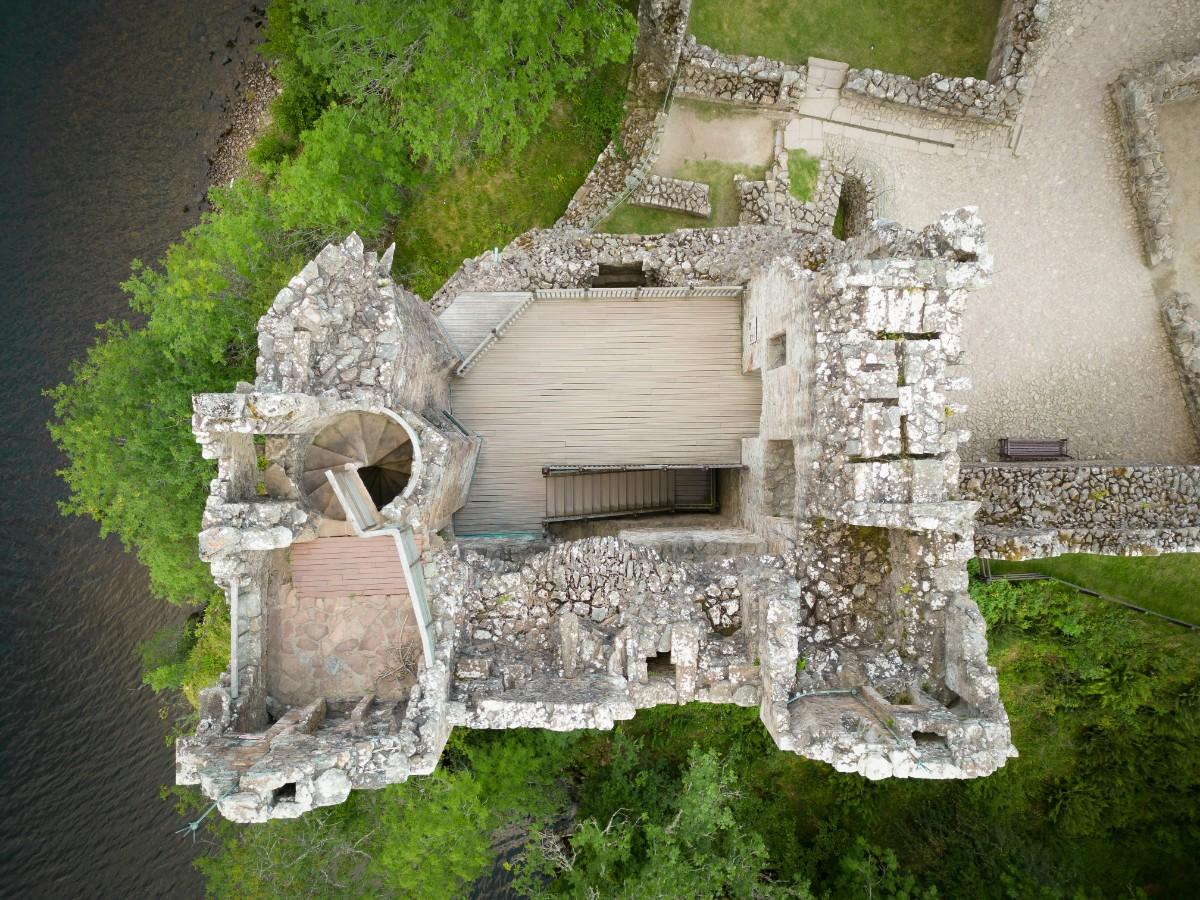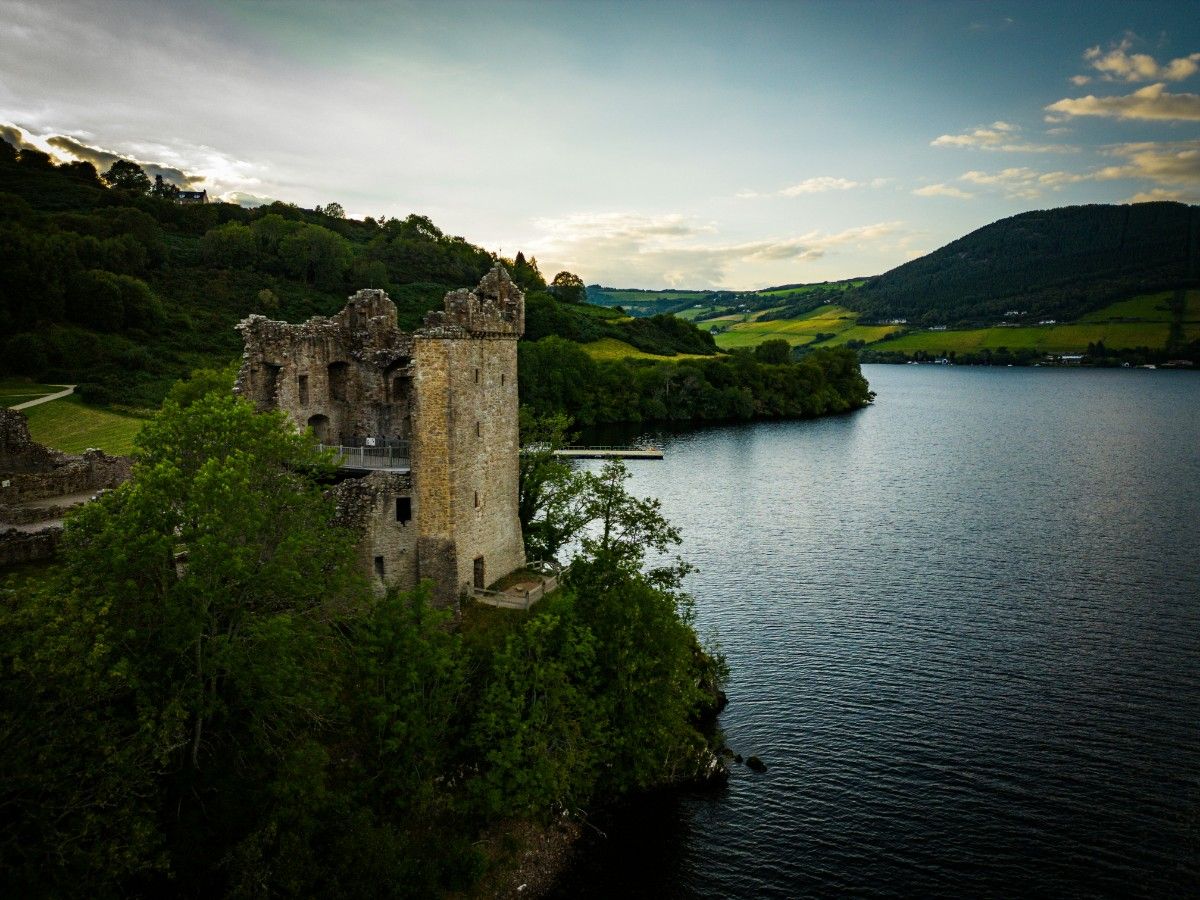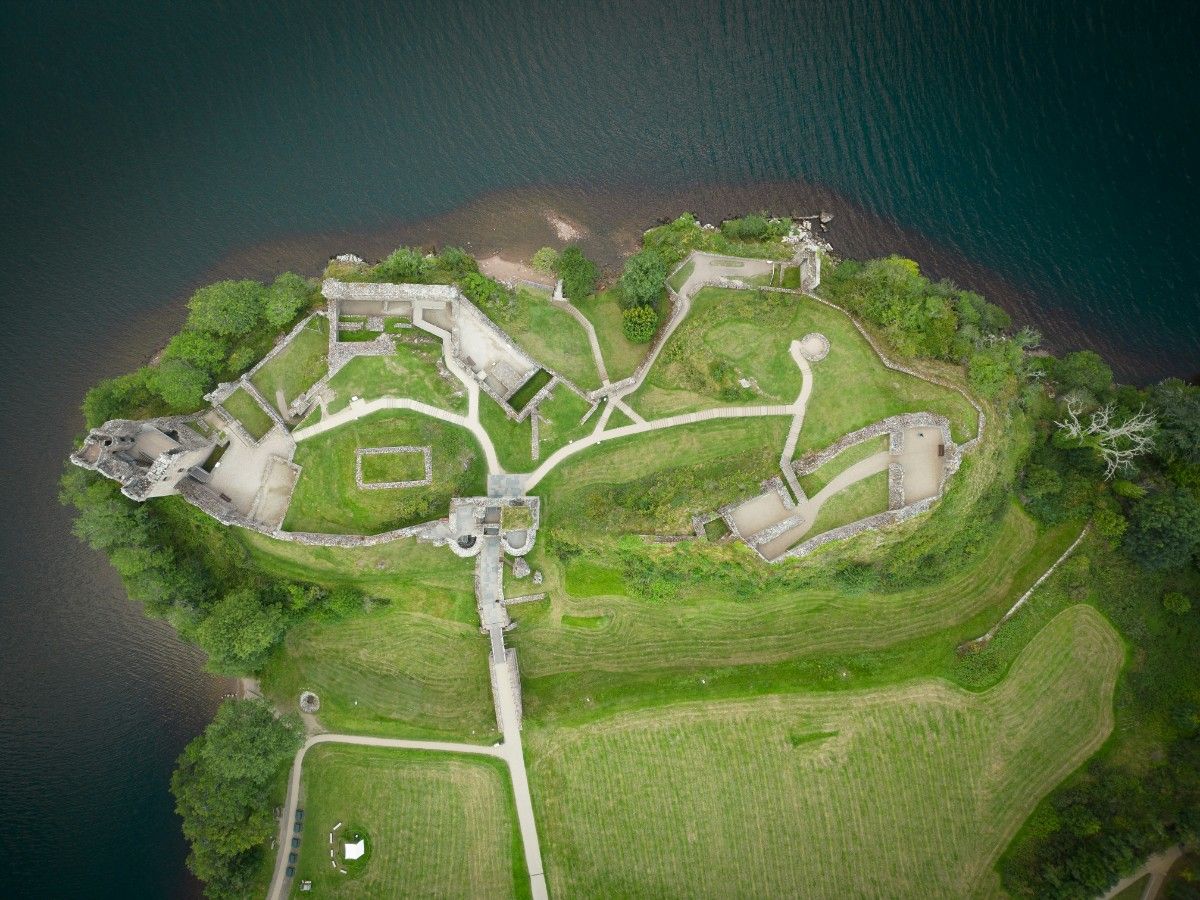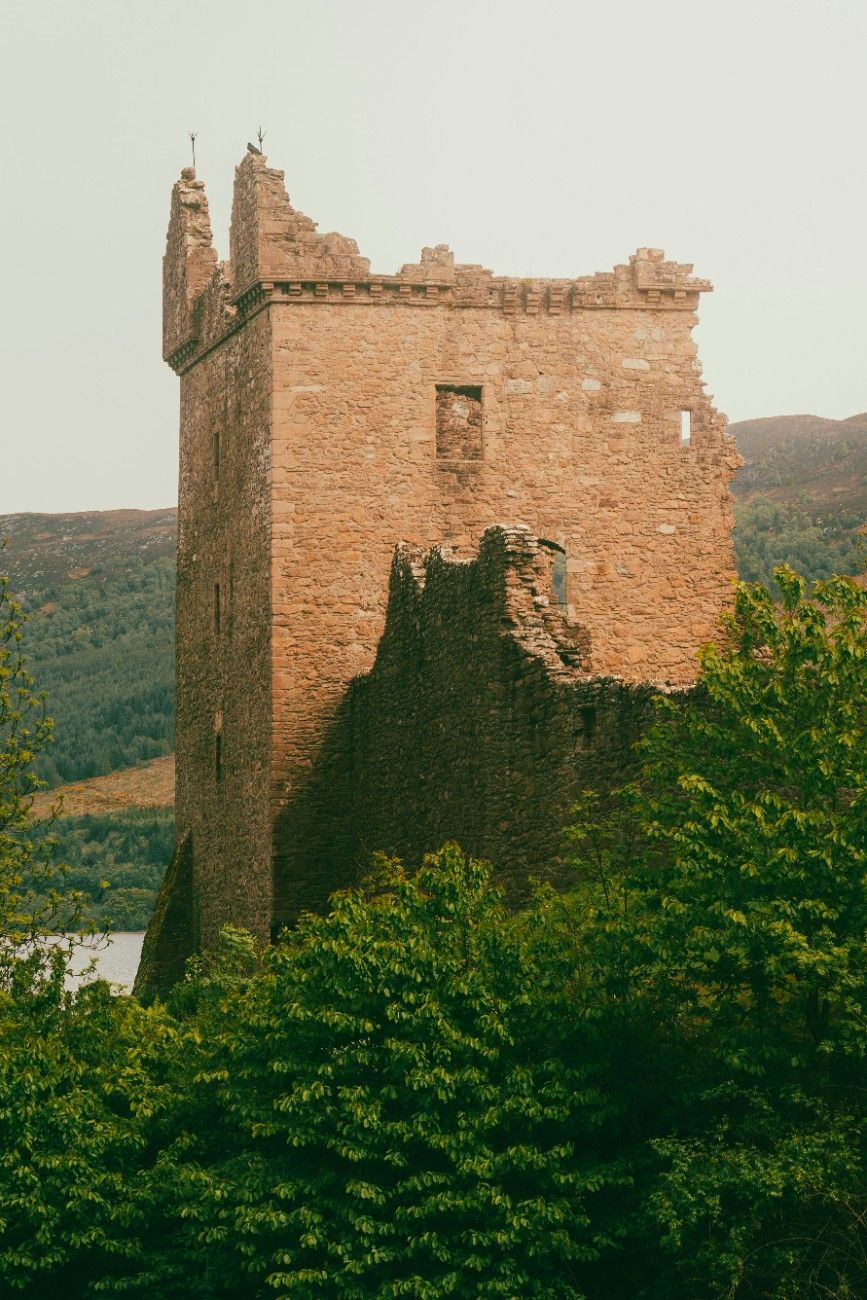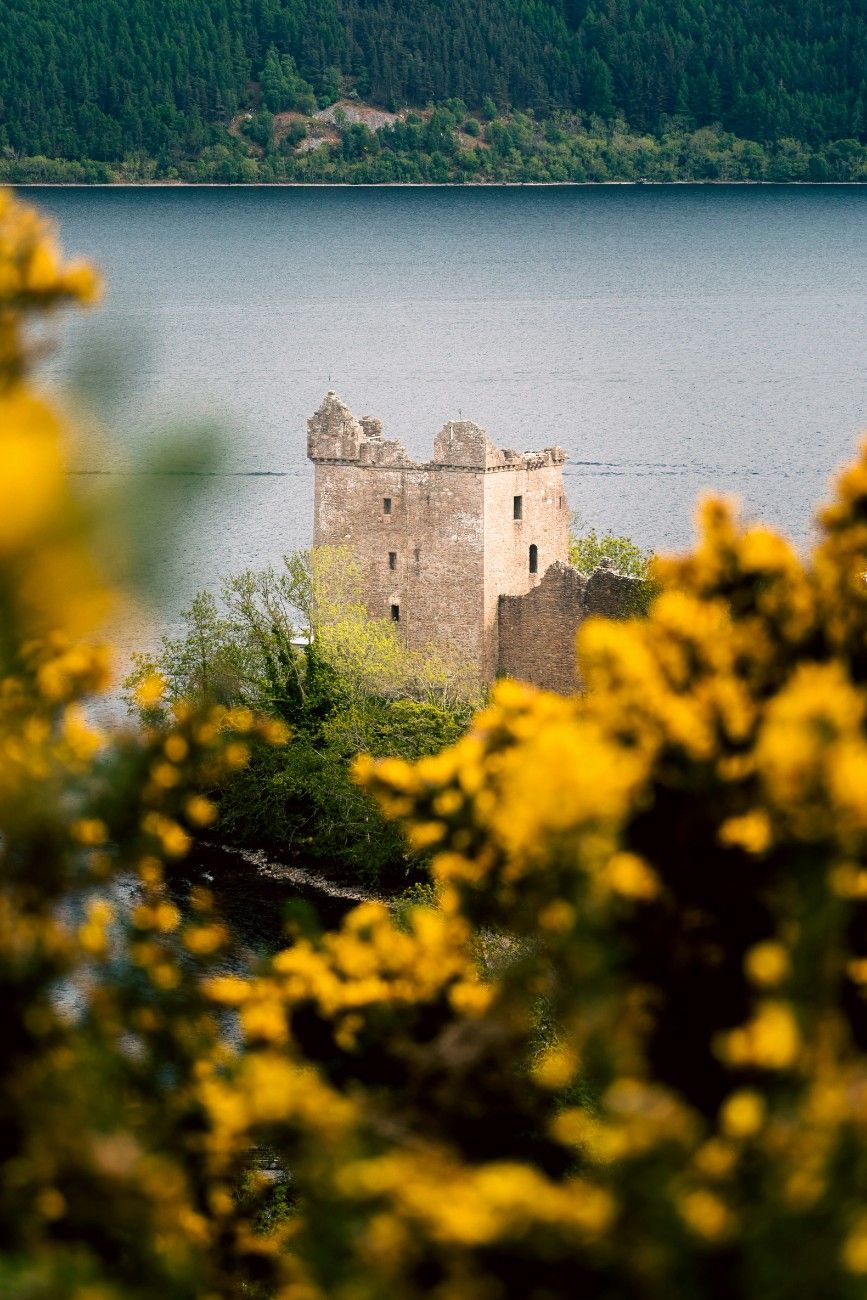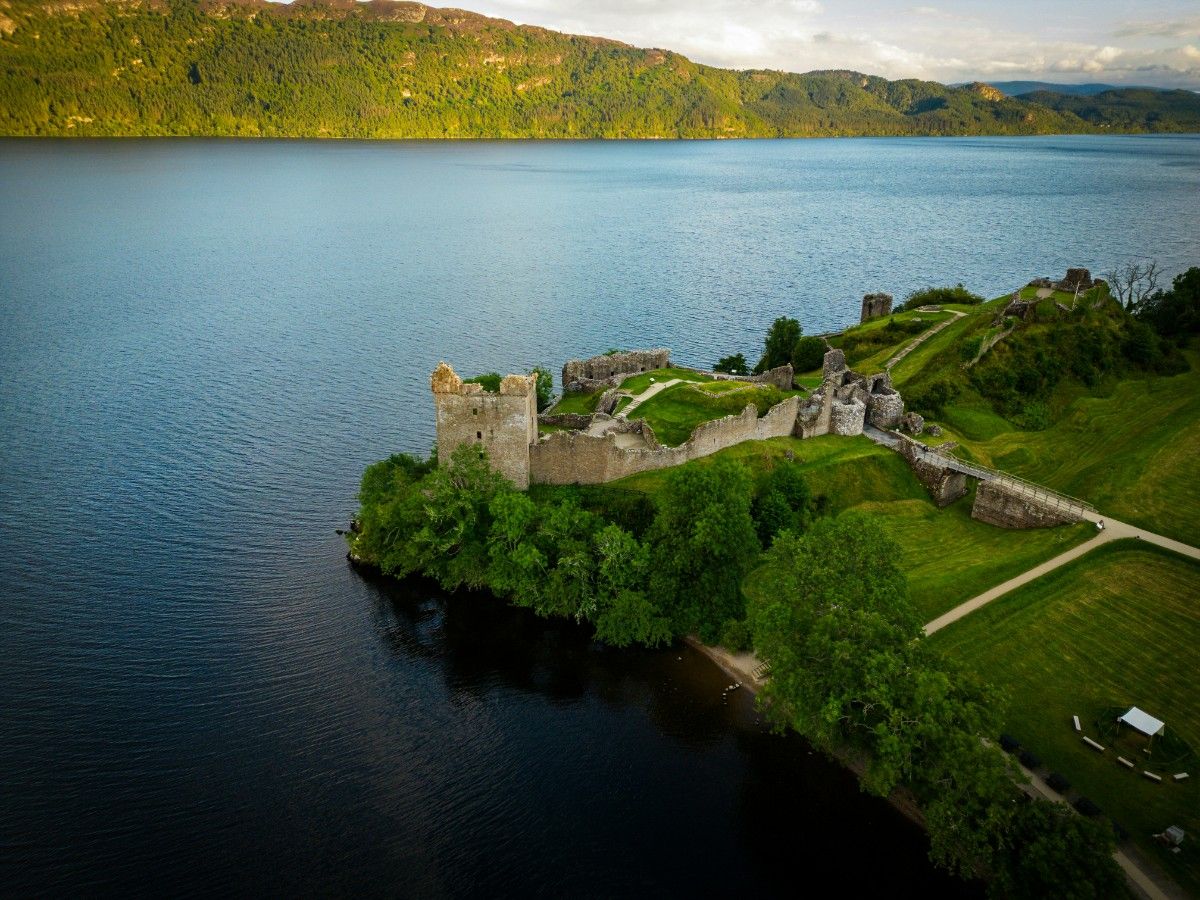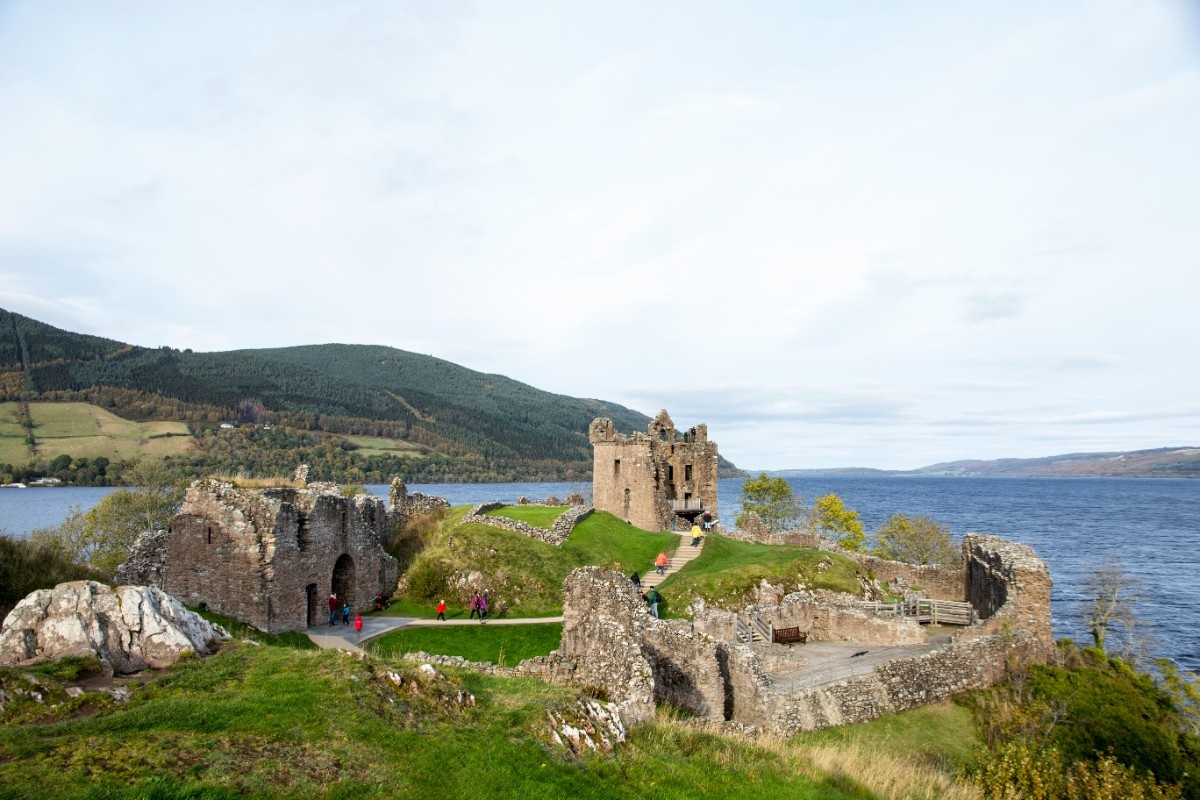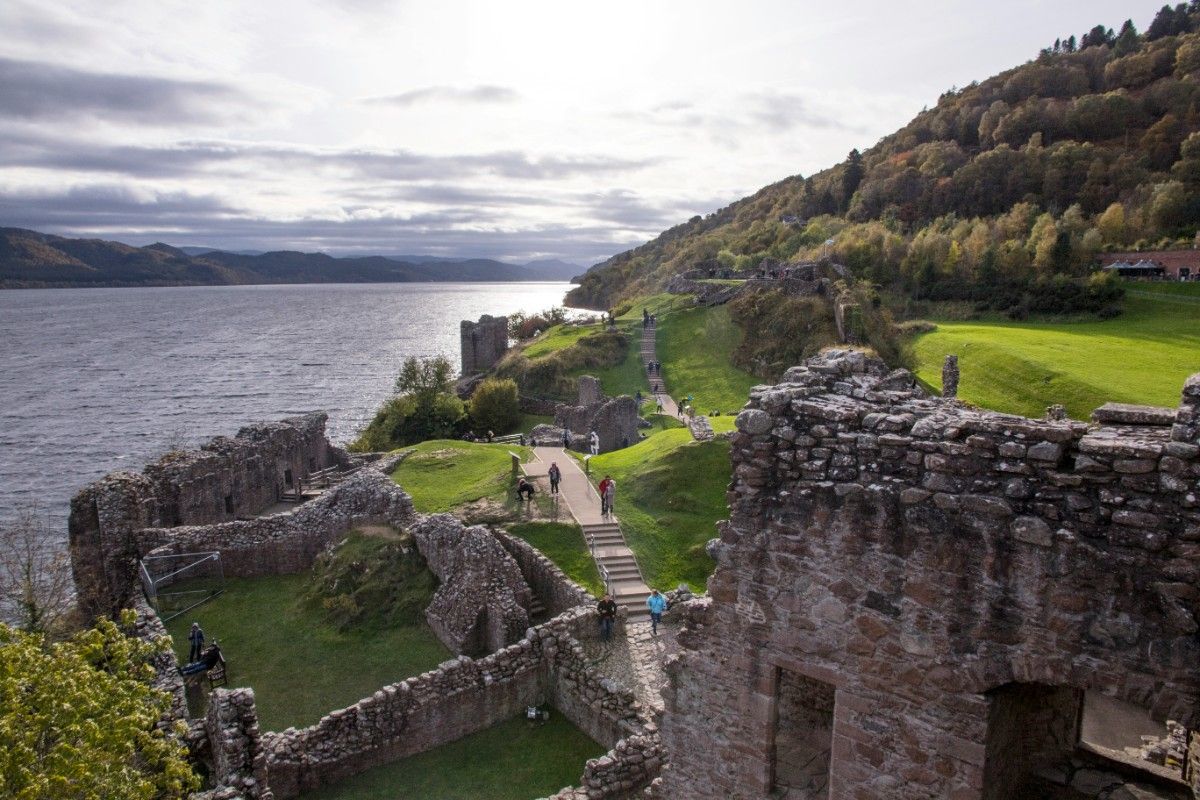Discovering the Majestic Urquhart Castle
A Timeless Fortress on the Banks of Loch Ness
Nestled on the shores of the enigmatic Loch Ness in the Scottish Highlands, Urquhart Castle stands as a testament to the rich history and enduring spirit of Scotland. This iconic fortress has witnessed centuries of conflict, intrigue, and legend, captivating the imaginations of visitors from around the world. As you approach the castle ruins, you can almost feel the weight of its turbulent past, whispered in the wind that rustles through the ancient stones. The once-mighty walls and towers, now crumbling and overgrown with verdant moss, offer a glimpse into the lives of the nobles, warriors, and everyday people who once called Urquhart Castle home. To discover this majestic site is to embark on a journey through time, unravelling the secrets and stories that have shaped the Scottish Highlands for generations.
The Strategic Importance of Urquhart Castle
Urquhart Castle's strategic location on a promontory overlooking Loch Ness has played a crucial role in its long and storied history. The castle's commanding position allowed its occupants to control the vital waterway and the surrounding glens, making it a key stronghold in the power struggles that defined medieval Scotland. From its earliest days as a Pictish fort to its later incarnations as a royal castle and clan seat, Urquhart Castle has been at the centre of some of the most pivotal events in Scottish history. Its walls have withstood sieges by the English during the Wars of Scottish Independence, sheltered the fugitive monarch Robert the Bruce, and even played a role in the Jacobite Rising of 1689. The castle's strategic importance is a testament to the ingenuity and resilience of the Scottish people, who have long recognised the value of this remarkable site.
The Architectural Marvel of Urquhart Castle
Despite its ruined state, Urquhart Castle remains an architectural marvel, showcasing the skill and innovation of medieval castle builders. The castle's design evolved over centuries, adapting to changing needs and technologies, and incorporating a range of defensive and domestic features. The massive curtain walls, which once encircled the entire site, were built to withstand the onslaught of siege engines and determined attackers. The great tower house, known as the Grant Tower, served as both a residence for the castle's nobles and a formidable strongpoint, with its thick walls and narrow arrow slits. Other notable features include the great hall, where banquets and celebrations were held, and the chapel, a place of quiet reflection amid the bustle of castle life. Exploring the ruins of Urquhart Castle, you can't help but marvel at the ingenuity and craftsmanship that went into creating this architectural gem on the banks of Loch Ness.
Planning Your Visit to Urquhart Castle
Getting to Urquhart Castle
Urquhart Castle is located in the heart of the Scottish Highlands, near the picturesque village of Drumnadrochit on the western shore of Loch Ness. The castle is easily accessible by both car and public transportation, making it a convenient destination for visitors exploring the region. If you're driving, take the A82 road from Inverness and follow the signs for Urquhart Castle. The journey takes approximately 30 minutes and offers breathtaking views of the Highland landscape along the way. Alternatively, you can take a bus from Inverness to Drumnadrochit, with regular service provided by several local operators. Once in Drumnadrochit, it's just a short walk or taxi ride to the castle visitor centre. For a truly memorable experience, consider taking a boat tour of Loch Ness, which often includes a stop at Urquhart Castle and provides a unique perspective on this iconic site.
Visitor Information and Facilities
To make the most of your visit to Urquhart Castle, it's important to plan ahead and familiarise yourself with the available visitor information and facilities. The castle is open year-round, with extended hours during the summer months to accommodate the increased number of visitors. Admission tickets can be purchased online in advance or at the visitor centre upon arrival, with discounts available for children, seniors, and families. The visitor centre itself is a fantastic resource, offering a wealth of information about the castle's history, as well as interactive exhibits and an immersive video presentation that brings the past to life. Other facilities include a gift shop, where you can purchase souvenirs and mementos of your visit, and a café serving delicious local fare and refreshments. Be sure to wear comfortable walking shoes and bring appropriate clothing for the weather, as the castle grounds can be uneven and exposed to the elements.
Guided Tours and Special Events
To fully immerse yourself in the rich history and culture of Urquhart Castle, consider taking advantage of the guided tours and special events offered throughout the year. The castle's knowledgeable and passionate guides bring the stories of the past to life, sharing fascinating insights and anecdotes about the people who lived and died within these ancient walls. Guided tours are available in several languages and can be tailored to suit your interests and schedule. In addition to regular tours, Urquhart Castle also hosts a variety of special events and activities, ranging from historical reenactments and live demonstrations of medieval crafts and weapons to themed walks and talks by expert historians. These events provide a unique opportunity to engage with the castle's history in a hands-on and immersive way, and to gain a deeper appreciation for the enduring legacy of this remarkable site. Be sure to check the castle's official website or inquire at the visitor centre for a current schedule of tours and events.
Unravelling the Rich History of Urquhart Castle
The Origins of Urquhart Castle
The history of Urquhart Castle is a tapestry woven with threads of myth, legend, and documented fact, stretching back over a thousand years. The earliest known settlement on the site dates back to the 6th century, when a Pictish fort stood on the promontory overlooking Loch Ness. This ancient stronghold was likely constructed of timber and earth, and would have served as a strategic defence against rival clans and invaders. In the centuries that followed, the fort was rebuilt and expanded, evolving into a formidable stone castle that would play a pivotal role in the tumultuous history of the Scottish Highlands. The castle's name, "Urquhart," is believed to derive from the Gaelic "Airchartdan," meaning "by the wood," reflecting the lush forests that once surrounded the site. As you explore the ruins of Urquhart Castle today, you can't help but feel a sense of awe at the sheer depth and complexity of its history, and the countless generations who have shaped its story.
Urquhart Castle in the Wars of Scottish Independence
One of the most significant chapters in the history of Urquhart Castle unfolded during the Wars of Scottish Independence in the 14th century. The castle, which had been granted to the powerful Comyn family by King Edward I of England, became a key battleground in the struggle for Scottish freedom. In 1296, the English captured Urquhart Castle and installed a garrison, but it was soon recaptured by the Scots under the leadership of Andrew Moray. The castle changed hands several times over the course of the conflict, with the English and Scots each seeking to control this strategic stronghold on the banks of Loch Ness. Perhaps the most famous figure associated with Urquhart Castle during this period was Robert the Bruce, the legendary Scottish king who waged a guerrilla war against the English occupiers. According to local tradition, the Bruce sought refuge at the castle on several occasions, using it as a base of operations for his campaigns in the Highlands. The Wars of Scottish Independence left an indelible mark on Urquhart Castle, both in terms of its physical structure and its enduring legacy as a symbol of Scottish resistance and resilience.
The Decline and Fall of Urquhart Castle
Despite its impressive fortifications and strategic location, Urquhart Castle eventually fell into decline and disrepair. In the centuries following the Wars of Scottish Independence, the castle passed through the hands of various noble families, including the Grants and the MacDonalds. Each successive owner left their mark on the castle, building new towers, halls, and outbuildings to suit their needs and tastes. However, the castle's importance began to wane in the 16th and 17th centuries, as the political and military landscape of Scotland shifted. The final blow came in 1692, during the Jacobite Rising, when government troops garrisoned at Urquhart Castle were ordered to destroy the castle's defences to prevent it from falling into Jacobite hands. The once-mighty fortress was reduced to a crumbling ruin, its stones used to build nearby farmhouses and walls. Today, the ruins of Urquhart Castle stand as a testament to the enduring power of history, and the countless stories and secrets that lie hidden within its ancient walls.
Exploring the Architectural Wonders of Urquhart Castle
The Curtain Wall and Gatehouse
One of the most impressive architectural features of Urquhart Castle is its massive curtain wall, which once encircled the entire site. Built in the 13th century, the curtain wall was designed to provide a formidable defence against attackers, with its thick stone blocks and crenelated battlements. The wall was punctuated by several towers, including the imposing gatehouse, which served as the main entrance to the castle. The gatehouse was a masterpiece of medieval engineering, with its drawbridge, portcullis, and murder holes designed to thwart would-be assailants. Today, visitors can still see the remains of the curtain wall and gatehouse, and marvel at the skill and ingenuity of the castle's builders. Walking along the wall's ramparts, you can't help but imagine the sense of security and power that the castle's occupants must have felt, knowing that they were protected by such an impressive fortification.
The Grant Tower and Great Hall
At the heart of Urquhart Castle stands the Grant Tower, a massive keep that served as the castle's main residence and stronghold. Built in the 14th century, the tower was named after the Grants, the powerful clan that owned the castle for much of its history. The tower was a marvel of medieval architecture, with its thick stone walls, narrow arrow slits, and winding spiral staircase. The tower's upper floors would have contained the private chambers of the castle's lord and his family, while the lower floors were used for storage and defence. Nearby, the Great Hall was the social and ceremonial hub of the castle, where feasts, banquets, and important gatherings were held. The hall was an impressive space, with its high vaulted ceiling, massive fireplace, and intricate stone carvings. Today, the Grant Tower and Great Hall are among the most iconic and recognisable features of Urquhart Castle, and offer a fascinating glimpse into the daily life and culture of the medieval Highlands.
The Nether Bailey and Stables
Beyond the main keep and curtain wall, Urquhart Castle contained a number of other architectural features that reflect the complex and varied functions of a medieval fortress. One such feature was the Nether Bailey, a lower courtyard that housed the castle's stables, workshops, and other service buildings. The Nether Bailey was an important part of the castle's economic and logistical operations, providing a space for craftsmen, traders, and other support staff to work and live. The stables, in particular, were a vital component of the castle's infrastructure, housing the horses and other animals that were essential for transportation, communication, and warfare. Today, the remains of the Nether Bailey and stables offer a fascinating glimpse into the everyday workings of a medieval castle, and the many people and activities that kept it running smoothly. As you explore these architectural wonders, you can't help but marvel at the ingenuity, skill, and sheer hard work that went into building and maintaining a fortress like Urquhart Castle on the banks of Loch Ness.
Discovering the Legends and Mysteries of Loch Ness
The Enigmatic Loch Ness Monster
No visit to Urquhart Castle would be complete without delving into the legends and mysteries that surround Loch Ness, the deep, murky waters that lap at the castle's shores. For centuries, tales of a mysterious creature lurking beneath the surface have captured the imaginations of people around the world, drawing visitors from far and wide to this remote corner of the Scottish Highlands. The most famous of these legends is that of the Loch Ness Monster, affectionately known as "Nessie." Descriptions of the creature vary, but most accounts speak of a large, serpentine beast with a long neck, humped back, and flippers. Despite numerous alleged sightings and investigations over the years, the existence of the Loch Ness Monster remains a subject of intense debate and speculation. Some believe that Nessie is a surviving plesiosaur, a prehistoric marine reptile, while others argue that the sightings can be explained by misidentifications of known animals, such as seals, otters, or large fish. Regardless of the truth behind the legend, the enduring fascination with the Loch Ness Monster has made it an integral part of the mythology and allure of Urquhart Castle and its surroundings.
Haunting Tales and Ghostly Apparitions
In addition to the legend of the Loch Ness Monster, Urquhart Castle is also steeped in tales of ghostly apparitions and supernatural occurrences. Given the castle's long and often bloody history, it is perhaps unsurprising that it has accumulated its fair share of ghostly lore over the centuries. One of the most famous tales involves the spirit of a young girl named Amber, who is said to haunt the castle's Grant Tower. According to legend, Amber was the daughter of one of the castle's lords, and fell to her death from the tower's high windows. Visitors and staff have reported seeing the ghostly figure of a young girl in a flowing dress, wandering the tower's spiral staircase or gazing out from its narrow windows. Another haunting tale speaks of a ghostly piper, whose mournful tunes can sometimes be heard echoing across the waters of Loch Ness. The piper is said to be the spirit of a soldier who was killed during one of the many sieges of Urquhart Castle, and whose restless soul still keeps watch over the ancient fortress. Whether or not you believe in ghosts, these eerie tales add an extra layer of intrigue and mystery to the already fascinating history of Urquhart Castle.
Mythical Creatures and Folklore
Beyond the Loch Ness Monster and ghostly apparitions, the Scottish Highlands are rich in mythical creatures and folklore that have captured the imaginations of people for generations. Many of these tales are deeply intertwined with the history and landscape of Urquhart Castle and Loch Ness. One such creature is the kelpie, a shape-shifting water spirit that is said to inhabit the lochs and rivers of Scotland. Kelpies are often described as horse-like beings that lure unsuspecting travellers into the water, only to drag them to their doom. Another legendary creature is the selkie, a seal-like being that can shed its skin and take on human form. Selkies are said to be gentle and benevolent creatures, but they can also be fierce protectors of their underwater realm. These mythical creatures and folklore add a rich tapestry of storytelling and imagination to the already awe-inspiring beauty of Loch Ness and its surroundings. As you explore Urquhart Castle and its environs, keep an eye out for any strange ripples or shadows in the water – you never know what mysteries might be lurking just beneath the surface.
Capturing the Perfect Shot: Photography at Urquhart Castle
Iconic Views and Vantage Points
Urquhart Castle, with its stunning location on the banks of Loch Ness, is a photographer's dream come true. From the moment you first catch sight of the castle's crumbling walls and towering turrets, you'll be itching to capture the perfect shot that encapsulates the beauty and history of this iconic site. One of the most famous views of Urquhart Castle is from the opposite shore of Loch Ness, where the castle's ruins are framed by the shimmering waters and rolling hills of the Scottish Highlands. This classic shot is particularly stunning at sunrise or sunset, when the warm light casts a golden glow over the ancient stones. Another iconic vantage point is from the top of Grant Tower, which offers a panoramic view of the castle complex and the surrounding landscape. From this lofty perch, you can capture sweeping vistas of Loch Ness, the Great Glen, and the distant mountains beyond. Whether you're an experienced photographer or a casual snap shooter, these iconic views are sure to inspire and delight.
Capturing the Details and Textures
While the grand vistas and sweeping landscapes of Urquhart Castle are undeniably stunning, there is also a wealth of photographic potential in the smaller details and textures of the site. The castle's crumbling walls and weathered stones are a testament to the passage of time, and offer endless opportunities for creative close-up shots and abstract compositions. The intricate carvings and decorative features of the castle's architecture, such as the ornate window frames and doorways, are also worthy of closer inspection. By focusing on these smaller elements, you can create intimate and evocative images that capture the essence of the castle's history and character. Another interesting detail to look out for is the lush vegetation that has taken root among the ruins, from delicate wildflowers to gnarled tree roots that have twisted their way through the ancient masonry. These natural elements add a sense of life and vitality to the castle's ruined structures, and can make for striking and unusual compositions.
Photography Tips and Techniques
To make the most of your photography at Urquhart Castle, it's worth keeping a few tips and techniques in mind. Firstly, consider the time of day and the quality of light when planning your shots. The soft, warm light of early morning or late afternoon can create a magical atmosphere and bring out the rich colours and textures of the castle's stones. Conversely, the harsh midday sun can create strong shadows and contrasts that can be challenging to work with. Secondly, experiment with different angles and perspectives to create more dynamic and interesting compositions. Instead of always shooting from eye level, try crouching down low or climbing up high to get a fresh viewpoint. You can also use the castle's walls, windows, and doorways to frame your shots and add a sense of depth and layering to your images. Finally, don't be afraid to get creative with your post-processing and editing. While it's important to capture the authentic beauty of Urquhart Castle, a little bit of creative manipulation can help to enhance the mood and atmosphere of your shots, and create truly memorable and striking images.
Immersing Yourself in the Beauty of the Scottish Highlands
Exploring the Majestic Landscapes
A visit to Urquhart Castle is not complete without taking the time to immerse yourself in the breathtaking beauty of the Scottish Highlands that surround it. This rugged and wild landscape is one of the most stunning and iconic in the world, with its rolling hills, deep glens, and shimmering lochs that stretch as far as the eye can see. One of the best ways to explore the majesty of the Highlands is to take a scenic drive along the winding roads that crisscross the region. The A82, which runs along the western shore of Loch Ness, is a particularly stunning route, offering breathtaking views of the loch and the surrounding mountains at every turn. Along the way, you can stop at picturesque villages like Fort Augustus and Invermoriston, where you can enjoy a warm welcome and a taste of traditional Highland hospitality. Whether you're hiking through the heather-clad hills, fishing in the crystal-clear streams, or simply soaking up the serene beauty of the landscape, the Scottish Highlands are sure to leave a lasting impression on your soul.
Discovering the Rich History and Culture
In addition to its natural beauty, the Scottish Highlands are also steeped in a rich history and culture that is deeply intertwined with the story of Urquhart Castle. From the ancient Picts who first settled the region to the clans and kings who fought for control of its lands and castles, the Highlands have been shaped by generations of hardy and resilient people. One of the best ways to discover this fascinating history is to visit some of the many museums and heritage sites that dot the landscape. The Loch Ness Centre and Exhibition in Drumnadrochit is a great place to start, with its engaging displays and interactive exhibits that explore the natural and cultural history of the loch and its surroundings. Other must-see attractions include the Culloden Battlefield and Visitor Centre, which tells the story of the final battle of the Jacobite Rising in 1746, and the Highland Folk Museum, which recreates traditional Highland life through a series of immersive outdoor exhibits. By delving into the history and culture of the Scottish Highlands, you'll gain a deeper appreciation for the enduring legacy of Urquhart Castle and the people who once called it home.
Experiencing Highland Hospitality and Traditions
No trip to the Scottish Highlands would be complete without experiencing the warm hospitality and rich traditions of the local people. From the moment you arrive in the region, you'll be greeted with a friendly smile and a hearty "hello" from the locals, who are justly proud of their heritage and eager to share it with visitors. One of the best ways to experience Highland hospitality is to stay in a traditional bed and breakfast or guest house, where you'll be treated to home-cooked meals and cosy accommodations that reflect the charm and character of the region. Another must-do experience is to attend a traditional Highland gathering or games, where you can watch kilted athletes compete in feats of strength and skill, such as tossing the caber or throwing the hammer. You can also enjoy traditional Scottish music and dance performances, sample delicious local foods and drinks, and browse the wares of skilled craftspeople and artisans. By immersing yourself in the hospitality and traditions of the Scottish Highlands, you'll come away with a deeper appreciation for the warmth and resilience of the Highland people, and a lasting connection to this special corner of the world.
Unfolding the Enduring Legacy of Urquhart Castle
A Testament to Scottish Resilience and Perseverance
As you stand amidst the ruins of Urquhart Castle, it's impossible not to feel a sense of awe and reverence for the enduring legacy of this remarkable site. For centuries, the castle has stood as a testament to the resilience and perseverance of the Scottish people, who have faced countless challenges and hardships throughout their history. From the Wars of Scottish Independence to the Jacobite Risings, Urquhart Castle has been at the centre of some of the most pivotal moments in Scotland's past, and has endured through them all. The castle's ruined walls and towers are a poignant reminder of the sacrifices and struggles of generations of Scots who fought to protect their land, their culture, and their way of life. By exploring the ruins and learning about the castle's history, visitors can gain a deeper appreciation for the indomitable spirit of the Scottish people, and the enduring legacy of Urquhart Castle as a symbol of their resilience and determination.
Preserving and Interpreting the Castle's History
Today, Urquhart Castle is owned and managed by Historic Environment Scotland, a government agency dedicated to preserving and interpreting Scotland's rich cultural heritage. The agency has undertaken extensive conservation and restoration work at the castle, to ensure that its ruins are preserved for future generations to enjoy and learn from. Visitors to the castle can explore the site at their own pace, using a range of interpretive tools and resources to guide their discovery. These include informative panels and displays, audio guides, and guided tours led by knowledgeable and passionate staff. The castle's visitor centre is also a hub of learning and exploration, with engaging exhibits and interactive displays that bring the castle's history to life. By supporting the work of Historic Environment Scotland and other heritage organisations, visitors can play a vital role in preserving and interpreting the enduring legacy of Urquhart Castle, and ensuring that its stories and lessons are passed on to future generations.
A Symbol of Scottish Identity and Pride
Perhaps the most enduring legacy of Urquhart Castle is its role as a symbol of Scottish identity and pride. For centuries, the castle has been a beacon of hope and inspiration for the Scottish people, a tangible reminder of their long and proud history, and their unbreakable spirit in the face of adversity. Today, the castle continues to hold a special place in the hearts of Scots around the world, who see it as a powerful symbol of their heritage and their homeland. Many Scottish diaspora communities have adopted the castle as a focal point for their cultural celebrations and gatherings, using it as a way to connect with their roots and to share their love of Scotland with others. The castle has also inspired countless artists, writers, and musicians over the years, who have been moved by its beauty, its history, and its enduring spirit. From the haunting ballads of the Scottish folk tradition to the soaring orchestral works of modern composers, Urquhart Castle has left an indelible mark on Scottish culture and creativity. By embracing the castle as a symbol of their identity and pride, Scots around the world can keep the enduring legacy of Urquhart Castle alive, and ensure that its spirit continues to inspire and uplift future generations.
Related Articles

Let us know you agree to cookies
We use marketing, analytical and functional cookies as well as similar technologies to give you the best experience. Third parties, including social media platforms, often place tracking cookies on our site to show you personalised adverts outside of our website.
We store your cookie preferences for two years and you can edit your preferences via ‘manage cookies’ or through the cookie policy at the bottom of every page. For more information, please see our cookie policy.
